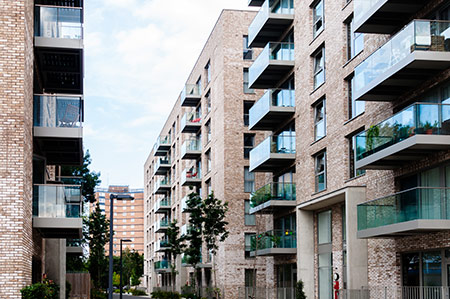
Low usage
Care home for elderly persons, offices.


As so many factors affect the required flow rate, professional confirmation is necessary. To calculate the likely peak demand, the table below shows actual flow requirements for each appliance and the likely simultaneous demand in low-usage applications, normal domestic situations and higher usage. A suggested design flow rate can be established by multiplying the number of appliances by the flow figure in the relevant column.
It is important to note that there are instances where a different column must be used for a particular appliance. A sports club, for example, may need all of the showers running at once, so the figure used would be the actual flow requirement multiplied by the number of showers installed.

Care home for elderly persons, offices.

Individual private residences, infant schools.

Hotels, student accommodation, apartments.
Scroll ↔ to view full table
IMPORTANT NOTE: When calculating the pressure required, it is critical to allow for the static head and outlet pressure requirements in your calculations.